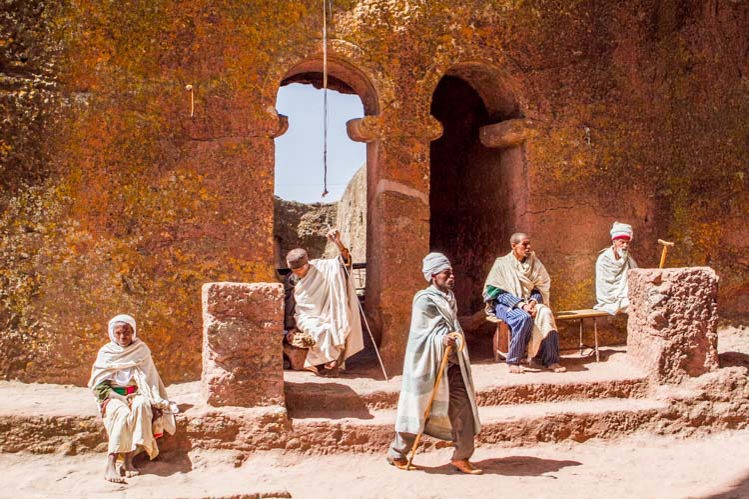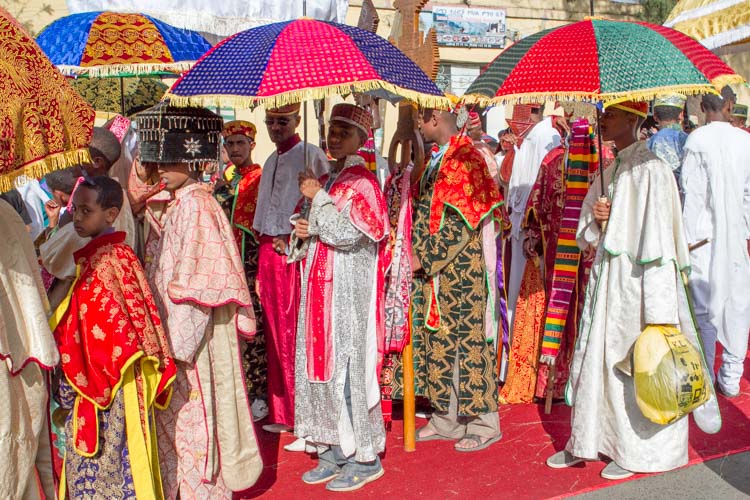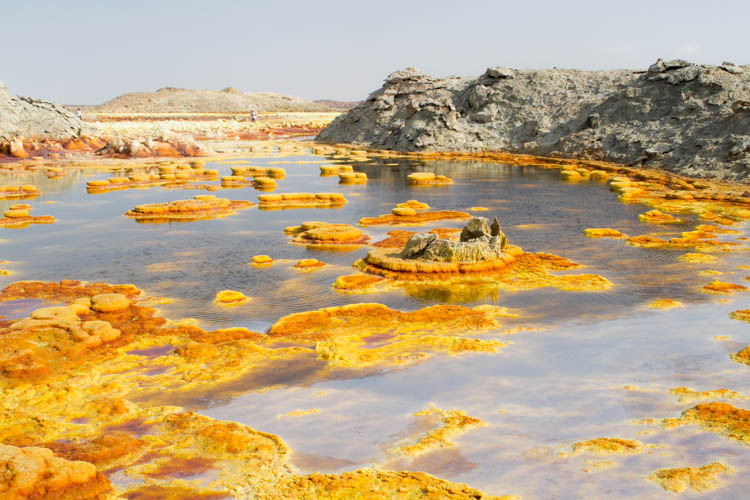Ethiopia: A Truly Unique, Undiscovered Adventure
In the age of affordable flights and accessible travel, it can feel like there are few unexplored frontiers left on earth for adventurous travellers looking to see something new. Luckily for travelers looking to get far from the beaten path, Ethiopia is a country that is rich in culture and natural beauty and hasn’t yet been overrun by tourists. It is one of only two African countries that have never been colonized, which means Ethiopia is a rare place where the culture was able to grow and change on its own without influence from the western world. The word is spreading quickly on this once in a lifetime travel destination, and this hidden gem won’t stay hidden for long.
Traveling on Ethiopian Time

Everything is different in Ethiopia. The markets are brighter, the nature is richer, and the people have their own way of telling time. Ethiopia is very close to the equator, which means they get daylight for most of the year. Time runs on a 12 hour clock from dawn to dusk. When the sunrises it is 1 o’clock, and sunset is at 12 o’clock, and then the 12 hour cycle begins anew at dusk. The time of day is not the only thing they do differently in Ethiopia. The year they are living in is entirely different as well. The Ethiopian calendar is based on the Coptic calendar, rather than the Gregorian calendar that most of the rest of the world uses. The different calendars are attributed to alternate calculations in the date of the birth of Jesus Christ. Because of the change in calendars, when you visit Ethiopia you will be stepping back seven years in time. Having their own unique timetables can make Ethiopia a confusing place to visit when you first arrive, but learning to tell Ethiopian time is all part of the experience of traveling in this truly unique place.
Festivals
Ethiopia is unique for many reasons besides being on a different schedule from the rest of the world. The country is overflowing with vibrant and colorful festivals, no matter what time of year you visit, and these celebrations are unlike any other on the planet. Travelers in Ethiopia are always blown away by how dramatically villages and cities come alive during festivals. While there are countless opportunities to experience the sensory overload joy of Ethiopian festivals, the best and brightest event of the year is Timket. Also known as The Feast of Epiphany, Timket is a religious celebration commemorating the baptism of Jesus Christ in the Jordan River. Taking place every January, this three day festival begins with a ceremonial reenactment of the baptism of Jesus Christ. After the ceremony, prepare for endless singing, dancing, feasting, and color. The air is saturated with excitement, joy and energy, with everyone wearing their finest clothes and in their brightest celebratory moods. There is no shortage of things to do and see during Timket, three days hardly feels like enough.

If you’re looking for more grand festivals in Ethiopia, head to Lalibela in time to celebrate Orthodox Christmas. Often referred to as the “New Jerusalem,” Lalibela is the oldest city in the country. It sits way up in the northern highlands of Ethiopia, offering stunning views of the surrounding land. Orthodox Christmas begins on January 7th and lasts for several days, which include preparations and grand religious celebrations. On your way to Lalibela, you’ll inevitably be swept up in the mass of people on pilgrimages from all over the country. People come by foot, car, bus and sometimes even donkey to celebrate this big holiday in the holiest of cities. No matter what time of year you visit Ethiopia, Lalibela is an absolute must see. The city is home to eleven ancient monolithic churches, which have landed Lalibela the title of UNESCO World Heritage Site.
Natural Beauty and Endless Adventure
No matter how much time you spend in Ethiopia, you’ll barely feel like you’re scratching the surface. The desire to learn and see and do more will have you permanently itching to come back, but this is one of the reasons why Ethiopia is such an immensely fun place to visit. Once you’ve learned to tell time and partied hard with the locals during whatever colorful festival you find during your visit, be sure to take some time to experience Ethiopia’s astonishing natural wonders and get to know the people of some of the country’s traditional tribes. One of the most famous places to visit in Ethiopia is the Omo Valley, and for good reason. The Omo Valley is located in southern Ethiopia, and is home to some of the most remote tribes in all of Africa. There are over 16 different groups living in the Omo Valley, each one with their own unique traditions and ways of life. When people think of the indigenous people of the Omo Valley, they think of big lip plates, scarification rituals, and spear hunting, but the traditions of these groups run so much deeper than that. No visit to Ethiopia is complete without meeting and getting to know some of the details of the lives of the indigenous people who live here.

Besides learning new things about the various local cultures, the Omo Valley offers some incredible, untouched landscapes and nature adventures. Stunning mountain ranges sprawl across vast open lands and tower over glistening lakes. There are countless opportunities to go hiking and enjoy the fresh air. For thrill seekers, the Omo River is a phenomenal place to go rafting. If that’s not your thing, you can still experience the magnificent and powerful rivers in the area with various boat cruises that sail around in the hopes of spotting exciting creatures like hippos and crocodiles. Once you’ve adequately explored Omo Valley, take your nature loving soul to the Simien Mountains in northern Ethiopia. The mountains are an incredible place to get outside and see countless endemic wildlife such as the walya ibex or the Ethiopian wolf. The area also offers tons of world class hiking and trekking opportunities.
Once you’ve gone high, it’s time to get down low. The Danakil Depression, also located in northern Ethiopia, is one of the deepest depressions in the world caused by the divergence of three tectonic plates. This vast desert plane sits 410ft below sea level, and its massive moon-like landscapes will have you feeling like you’ve left this planet altogether. Nowhere else on earth looks the way the Danakil Depression does, so a visit to this extremely unique place is an essential part of any trip to Ethiopia.
No matter your interests, Ethiopia has something for any traveler looking to experience a place away from the crowds. The country is unlike any other in so many ways, it’s brimming with opportunities to learn about an entirely different way of life. Ethiopia is a place that keeps travelers coming back again and again. It’s impossible not to fall in love with this colorful, extraordinary country.
Dara is avid scuba diver, book worm, and vegetarian foodie with a deep passion for conservation. Her favorite countries so far are Greece, Bosnia and South Africa. She loves writing about anything that encourages people to get outdoors, try something new, and live more sustainably.











